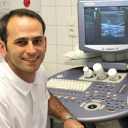
Benign breast masses have the ability to transform into malignant tumors. The same applies to intraductal breast papilloma. The disease occurs in women and girls of any age. Treatment strategy can include both surgical and non-surgical, wait-and-see management. All depends on the lesion type and localization, as well as the patient age.
What is an intraductal breast papilloma?
Intraductal papilloma is a papillary tumor. It refers to benign breast masses. If detected in time, it can be easily cured. Self-resorption of the tumor is not possible. Therefore, in most cases, as soon as the condition is detected, surgery is recommended.
The lesions look like warts or papillae filled with fluid. They are localized inside the breast milk ducts. The size can reach several centimeters. Papillomas can form both in one breast and on both sides at once.
The most characteristic sign is discharge from the nipple. This can be both drops of blood and serous fluid. In some cases, it is possible to identify a thickening by palpation.
Causes of intraductal papilloma
The disease is a form of mastopathy. Any hormone imbalance can lead to breast disorders. Therefore, one may say that the main causes of intraductal papilloma are the following:
- Ovarian dysfunction. The disease can be suspected if there the menstrual cycle is irregluar.
- Hyperplastic processes. These include myoma, endometriosis.
- Inflammations of the reproductive organs.
- Frequent abortions, which lead to hormonal disorders and provoke hyperplastic processes.
- Choosing not to breastfeed, which prevents the normal development of breast tissue.
- Polycystic ovary syndrome. Anovulation causes a lack of progesterone.
In some cases, papillomas appear together with mastopathy. At the same time, the mere presence of the above causes does not always lead to papilloma development. Of major importance are certain provoking factors, i.e.:
- diabetes mellitus;
- obesity;
- thyroid disorders;
- late menopause;
- incorrect use of contraceptives.
Pathogenesis of the breast disease
The breast is very sensitive to hormonal disorders. Of particular importance are estrogens. Normally, at the beginning of the menstrual cycle, they stimulate proliferative processes, but this balance is equalized by progesterone, which is produced in the second half of the cycle. In the presence of abnormal conditions, this does not happen.
As a result of a hormone imbalance, the following changes occur in the breast tissues:
- the process of division of epithelial cells starts;
- the neoplasm growth rate increases;
- fibroblast activity increases;
- proto-oncogenes are produced.
Given the apoptosis, or cell death process, is disturbed, the intraductal papilloma development chances increase.
Classification of intraductal papilloma
The abnormal hormone-associated breast condition can occur at any age. Localization can also be different. Intraductal papillomas appear both in the nipple area, and near the lobular structures. Accordingly, doctors distinguish central and peripheral breast masses.
The lesions can be single or multiple. The former are more often located in the area of the areola, while the latter are usually closer to the periphery of the breasts.
Stages of intraductal papilloma development
In the initial stage, intraductal papillomas may stay undetected for a long time. They are located near the nipple, but do not show any signs. There is a drop of blood when the nipple is squeezed, but there is no pain.
At the next stage, intraductal papilloma can also not manifest itself in any way, but in the course of self-diagnosis, a woman can determine some abnormality in the breast. To do this, palpation of the breast should be carried out immediately after the end of menstruation. In this period, the tissues of the mammary glands are elastic, soft, while in the second phase of the cycle there may be foci of swelling.
The abnormal condition is indicated by the sensation of bundles under the skin. One may also feel lumps. As a result of pressure on the mammary gland, nipple discharge appears, which is the most characteristic sign.
At the advanced stage, the discharge changes its character. It turns brown, often staining the underwear; crusts may appear on the breast.
Diagnosis of intraductal papilloma
A breast care provider may first suspect an intraductal papilloma already after examination and palpation of the breast. In the presence of bloody discharge, a nipple smear test is performed. If atypia is detected, a consultation with a cancer specialist and more informative diagnostic procedures are to be done.
A tumor marker blood test is mandatory. The imaging exams include ductography (X-ray study of the ducts), ultrasound, mammography, MRI. The duct X-ray provides comprehensive information about the milk ducts. Intraductal papilloma can be indicated by a filling defect (when the image shows abnormal relief of the inner layer of the duct in the form of blotches). To obtain reliable results, it is important not to massage the breasts before the procedure, not to pump milk. At the same time, other diagnostic procedures are necessary to rule out cancer and other breast disorders.
The list of necessary examinations is determined by the doctor. If you are not sure about your doctor recommendations, you can seek a second opinion of European specialists.
Treatment of intraductal papilloma
If intraductal papilloma is confirmed, there can be no conservative therapy. The main treatment option is surgical removal of the mass. In adolescents and women under 25 years of age with a typical disease type, a wait-and-see approach is sometimes an option. However, even in such cases, some specialists recommend immediate surgery.
After 45 years of age, surgical removal should be done promptly after the diagnosis, even if cytological examination proves that it is benign. The strategies may differ.
In the typical form, vacuum aspiration is possible. In the case of an atypical form, sectoral resection is indicated. The latter is performed in all patients regardless of age if there is atypical hyperplasia. The operation is performed under general anesthesia. To make the mass location clearer, a contrast agent is injected into the duct.
Complications of intraductal papilloma
The most dangerous complication of intraductal papilloma of the breast is the development of a malignant tumor. Its probability depends on a large number of factors. The risk is higher in women over 45 years of age and with severe ovulatory cycle disorders.
Typical hyperplasia is less likely to transform into cancer, while the atypical form is more likely to become malignant. One may suppose that the risk of cancer is high if the lump is well palpable, there is abundant discharge from the nipple, or there are calcinates on the mammogram or ultrasound scans.
Second Opinion
A second opinion procedure is an opportunity to get remote advice from European doctors. It provides more information about the disease and methods of its treatment. In the case of breast papilloma, patients may have questions both at the stage of diagnosis and when choosing treatment strategy.
A doctor specializing in breast tumor diseases will evaluate the diagnostic findings, recommend additional examination procedures, and make or correct the diagnosis if necessary.
Treatment of intraductal papilloma of the breast also has many questions. Some patients are suitable for a wait-and-see tactic, while others need breast surgery. The technique of the latter can also differ. A second opinion will help to determine whether the treatment is correct and to plan rehabilitation and preventive procedures after surgery.
A second opinion can be ordered both in the format of a conference and a written consultation. It is sufficient to provide the available documents, conclusions, results of all examinations.
Benign breast tumors are quite common, and under certain circumstances change into a malignant neoplasm. Timely referral to a doctor and competent diagnosis will help to identify abnormal conditions in time and choose an effective treatment strategy.
References:
- Papillary lesions of the breast, Janina Kulka, 2022
- Intraductal papilloma of the breast – management, Diana Hodorowicz-Zaniewska, 2019
- Multiple Papillomas of the Breast: A Review of Current Evidence and Challenges, Rossella Rella, 2022
- Papillary Lesions of the Breast: An Update, Shi Wei, 2016


Comments — 0